 |
 |
 |
 |

|


|
|
|
|
|
|
#1
|
||||
|
||||
|
IP Spring Adjustment
Hello,
Wasnt sure that there was a good picture of the IP spring adjustment. I messed with mine to try to help to get rid of a shaky idle. Mine was right at 20.5-21mm, I stretched it to 25mm. It seemed to idle seemingly a tiny bit smoother, and Ill drive it shortly. Only iphone quality but I figure this is more or less goo enough... Anyway, enjoy! To remove the bolt, you need a 14mm or a 17mm wrench. I had a 14mm in my pocket, and it worked fine. Youll need to remove the temp sensor first, and there is little room to work, so beware that you cannot catch spilling fuel - so fuel gets everywhere. You will need about 1/2 roll of paper towels to collect all the fuel that spills out. But then you get this: 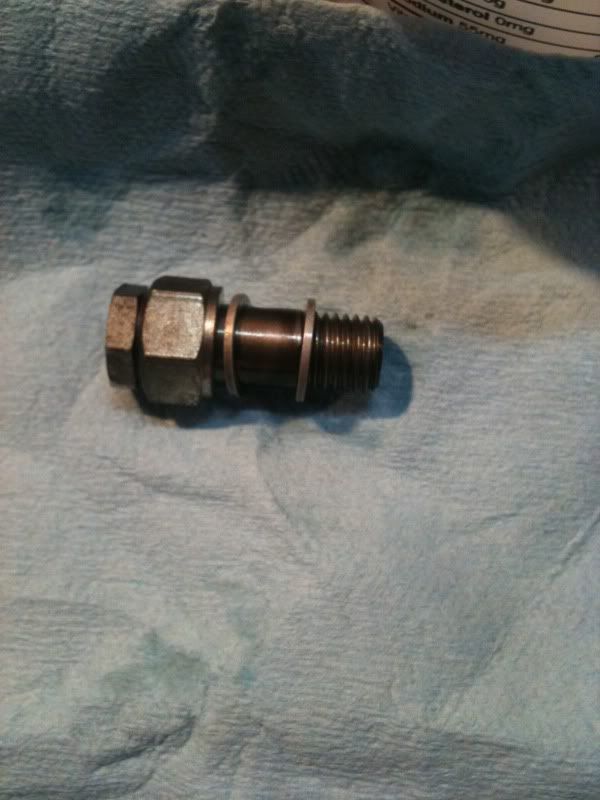 You can see the spring and ball bearing in the hole... Just like a turbo boost controller: 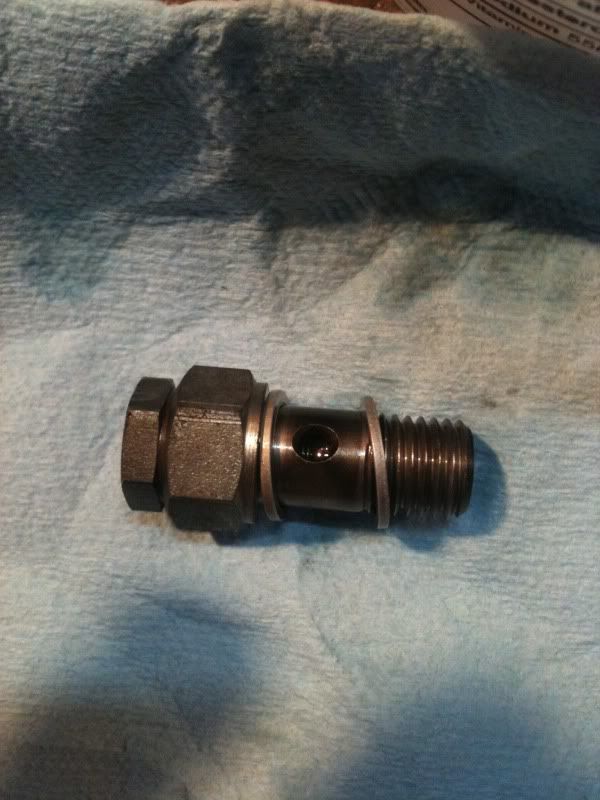 Apart, note the spring and the copper crush washer: 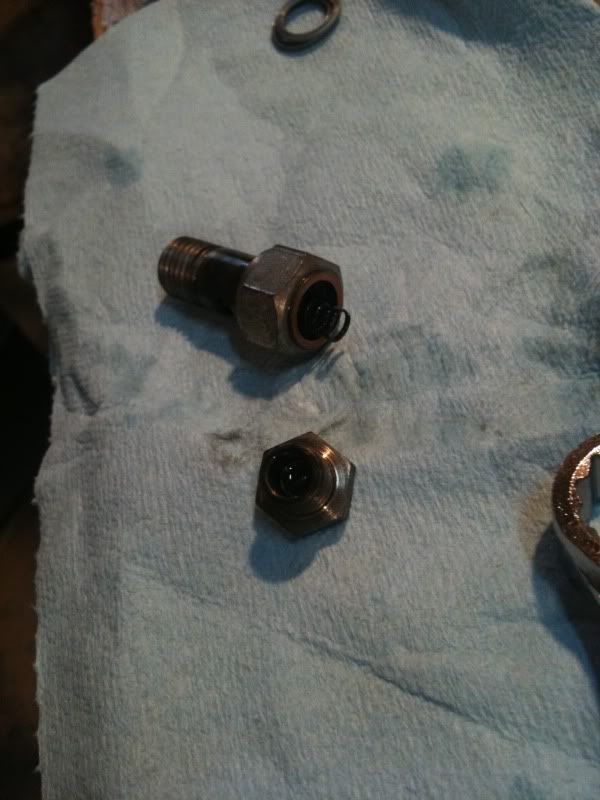 The spring before, right between 20-21mm: 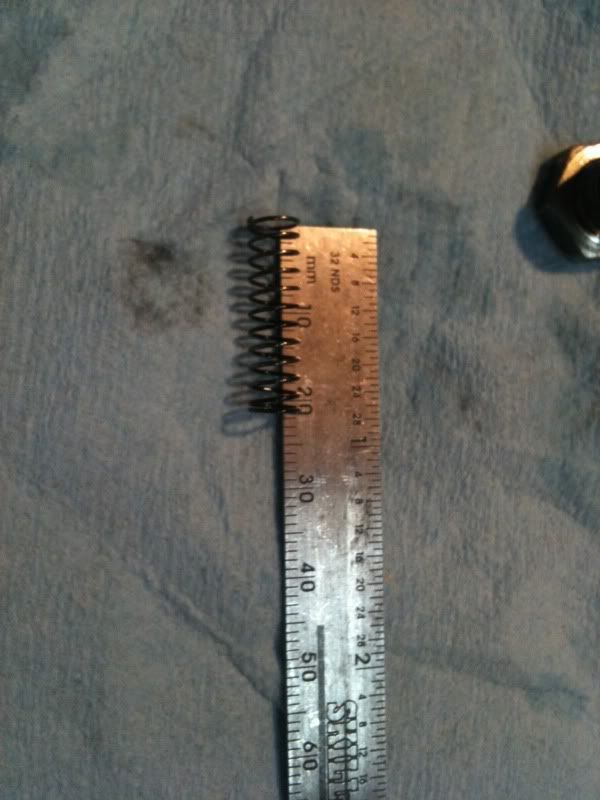 And after, stretched to about 25mm: 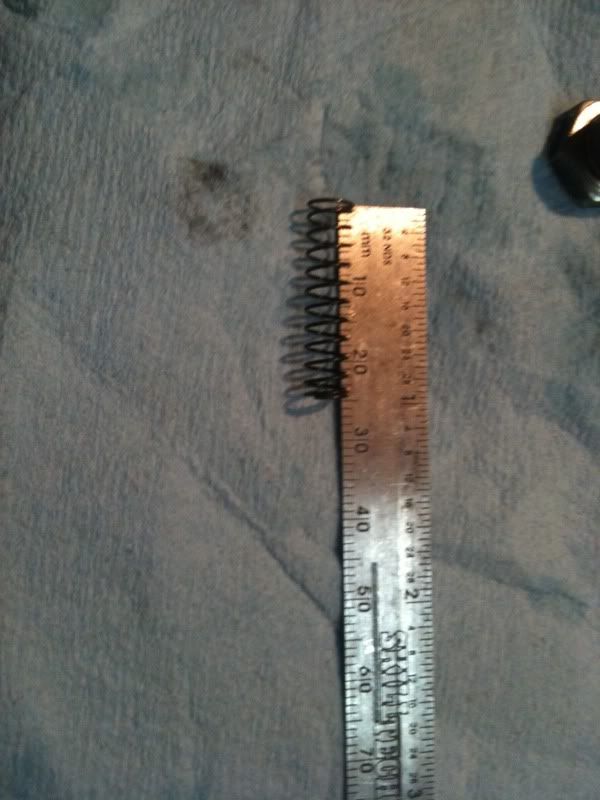
__________________
Current Diesels: 1981 240D (73K) 1982 300CD (169k) 1985 190D (169k) 1991 350SD (113k) 1991 350SD (206k) 1991 300D (228k) 1993 300SD (291k) 1993 300D 2.5T (338k) 1996 Dodge Ram CTD (442k) 1996 Dodge Ram CTD (265k) Past Diesels: 1983 300D (228K) 1985 300D (233K) |
|
#2
|
||||
|
||||
|
Is this the same spring as this by any chance?
http://www.peachparts.com/shopforum/showthread.php?t=285308&highlight=adjustable+funola
__________________
1992 W201 190E 1.8 171,000 km - Daily driver 1981 W123 300D ~ 100,000 miles / 160,000 km - project car stripped to the bone 1965 Land Rover Series 2a Station Wagon CIS recovery therapy! 1961 Volvo PV544 Bare metal rat rod-ish thing I'm here to chat about cars and to help others - I'm not here "to always be right" like an internet warrior Don't leave that there - I'll take it to bits! Last edited by Stretch; 11-24-2010 at 02:04 PM. Reason: I made a correction |
|
#3
|
|||
|
|||
|
Quote:
Using a gauge is the only way to truly find out if all is well. Your car should exibit more noticeable power when you get around to driving it if you are on diesel fuel especially. At the present time you also would have no way of knowing what the pressure really is. Too high a pressure may be detrimental on diesel fuel. Higher pressure than recommended may be better on wvo though. Recomended safe and preffered is 19 pounds fuel pressure in the base of the injection pump on diesel. |
|
#4
|
||||
|
||||
|
I just bought a fuel pressure kit 0-100psi for $19 at harbor freight...
I dont really care about power, I get 28-29 mpg and plenty of power/boost. I just want no hot idle shake, and the rack damper doesn't help. I got a compression tester to do that too...
__________________
Current Diesels: 1981 240D (73K) 1982 300CD (169k) 1985 190D (169k) 1991 350SD (113k) 1991 350SD (206k) 1991 300D (228k) 1993 300SD (291k) 1993 300D 2.5T (338k) 1996 Dodge Ram CTD (442k) 1996 Dodge Ram CTD (265k) Past Diesels: 1983 300D (228K) 1985 300D (233K) |
|
#5
|
|||
|
|||
|
Checking the valve clearances is always the first step with hot idle problems. As those valve stems heat up the clearances decline. One or more valves may be a little off their seats as a result.
Try to get a glycerine dampened 0-30 pound pressure gauge for working around these old mercedes fuel systems. Since you appear serious about this issue. Without the dampening action you may not be able to read the pressure. Read the milli volt scan method in the archives. It can pick off a faulty injector or establish the cylinder causing the imbalance if present. You have to be conciencious and systematic when using it. I doubt it is items like the motor mounts as it should be simular when cold. Make sure your engine shocks if present are in good shape though. Since you were already getting good fuel milage I suspect you already had 10-14 pounds fuel pressure before the spring adjustment. Also no major problems exist in the background. Last edited by barry123400; 11-24-2010 at 04:22 PM. |
|
#6
|
||||
|
||||
|
I will slowly get there.
Im still tracking down a hard start issue which I think was due to putting the rack damper pin in too far trying to combat the shake... Then due to nothing changing as I compressed/closed the return cigar hose line, I figured Id check the spring. No change in idle. Since I want to pull the GPs to check them, Ill do compression. I adjusted the valves last winter, not more than say 2k ago. I think I did them well... I had a funky (low) idle and some of the same things before that... Compression test would tell me if I had a bad valve on one of the cylinders, right?
__________________
Current Diesels: 1981 240D (73K) 1982 300CD (169k) 1985 190D (169k) 1991 350SD (113k) 1991 350SD (206k) 1991 300D (228k) 1993 300SD (291k) 1993 300D 2.5T (338k) 1996 Dodge Ram CTD (442k) 1996 Dodge Ram CTD (265k) Past Diesels: 1983 300D (228K) 1985 300D (233K) |
|
#7
|
|||
|
|||
|
If the engine was hot enough when compression was checked you might pick it up. Otherwise a valve that had too small of a clearance might be closed.
Thats is also why checking the valve clearances for correct settings is really the first thing that should be checked before a compression check or hot idle elimination issue is attempted. Mercedes wanted the valve clearances checked every fifteen K on their diesels. You should have lived when the mercedes gas cars clearance not being checked every ten thousand K usually meant replacing a burnt exhaust valve. I was only caught once. Never again. At least the diesels do not operate as hot and usually will absorb a little neglect. It still is not good though to hang valves open as so much heat is transferred away from the valve through the seating area when they are in contact. If the clearances have not been checked for ages. Carbon builds up on the sealing surfaces and is pounded off in operation. This requires a second check a few hundred miles later. The valve may then be sitting higher with the carbon gone reducing the clearance. Since you have already checked the valve clearances I see they are not an issue. No change at all basically when obstructing the injection pump output or relief valve means there has to be something going on in the fuel supply system. If it could be the cause of the hot idle issue is unknown.In my opinion not probable. When you close off the return the pressure in the base of the injection pump should rise to about thirty pounds pressure.. The engine would have let you know instantly that a base fuel pressure change of that magnatude had occured. This area just might be contributing to starting issues though. Perhaps it is time for a fuel pressure gauge check. For example the lift pump may be marginally just limping along. A simple illustration. The lift pump cannot quickly build good pressure. So the elements in the injection pump might be partially starved until operational fuel pressure develops. Not enough fuel quantity is being injected prior to this period to enable easily starting. Also the tired valves in that lift pump might enable easier drainback of some fuel when the engine is off. Yes it is time to establish the lift pump is good. At least the rebuild kit is only around ten dollars and is manageable by most members if it turns out to be needed. Low fuel pressure is not usually associated with good fuel milage is the fly in the ointment to some extent here. Last edited by barry123400; 11-24-2010 at 05:18 PM. |
|
#8
|
||||
|
||||
|
well who knows if I slipped up on one...
It may/may not be the issue, but my thought process was that a compression check is easier than a valve adjustment... At least I think. At least it is just pulling 5 GPs versus LOTS of stuff and turning the car by hand all the time.
__________________
Current Diesels: 1981 240D (73K) 1982 300CD (169k) 1985 190D (169k) 1991 350SD (113k) 1991 350SD (206k) 1991 300D (228k) 1993 300SD (291k) 1993 300D 2.5T (338k) 1996 Dodge Ram CTD (442k) 1996 Dodge Ram CTD (265k) Past Diesels: 1983 300D (228K) 1985 300D (233K) |
|
#9
|
|||
|
|||
|
Quote:
Not being a mechanic when I experience a problem I cannot instantly find or know for certain where to look. I have almost always found that putting all systems in good condition is worth the effort. Along the road I usually find what was the real issue. Justification is the engine has gotten a good tuneup as well and the problem was usually found along the way.. The beauty of the older indirect injection diesels is that there are so few systems to examine. The next level is the intermittent problems that cars experience. Some can be really challenging. Look at the bright side. In my opinion you have already found one potential issue. Plus your car has not got an intermittent problem. The majority of problems are inexpensive to correct as well. There is nothing wrong with doing a compresion check either. It is always nice to know what you have. Part of the tune up process as I see it. I really do not expect you will have any major compresion issues. It is a fact though until done nothing is certain about the compression.. This is the start of building a baseline for future refference on any engine. Last edited by barry123400; 11-24-2010 at 05:43 PM. |
|
#10
|
|||
|
|||
|
Spring adjustment doesn't matter, it can be 18mm or 38mm, its only reason for existence is to bleed air from the injection pump without allowing the prime to be lost as a bleed orifice would do. The lift pump's spring limits absolute pressure.
|
|
#11
|
||||
|
||||
|
Well there were 29+ pages on that very spring and the improvements it can make elsewhere on the site.
__________________
Current Diesels: 1981 240D (73K) 1982 300CD (169k) 1985 190D (169k) 1991 350SD (113k) 1991 350SD (206k) 1991 300D (228k) 1993 300SD (291k) 1993 300D 2.5T (338k) 1996 Dodge Ram CTD (442k) 1996 Dodge Ram CTD (265k) Past Diesels: 1983 300D (228K) 1985 300D (233K) |
|
#12
|
||||
|
||||
|
Quote:
No help...
__________________
Current Diesels: 1981 240D (73K) 1982 300CD (169k) 1985 190D (169k) 1991 350SD (113k) 1991 350SD (206k) 1991 300D (228k) 1993 300SD (291k) 1993 300D 2.5T (338k) 1996 Dodge Ram CTD (442k) 1996 Dodge Ram CTD (265k) Past Diesels: 1983 300D (228K) 1985 300D (233K) |
|
#13
|
||||
|
||||
|
Quote:
Also, what hose do I tee into? Can I tee into hoses that I cut and put in place of the cigar hose, or do I need to do it elsewhere? If I need to remove one of those hard plastic lines, how do I get it off? It is not like a rubber line with a hose clamp. Thanks!
__________________
Current Diesels: 1981 240D (73K) 1982 300CD (169k) 1985 190D (169k) 1991 350SD (113k) 1991 350SD (206k) 1991 300D (228k) 1993 300SD (291k) 1993 300D 2.5T (338k) 1996 Dodge Ram CTD (442k) 1996 Dodge Ram CTD (265k) Past Diesels: 1983 300D (228K) 1985 300D (233K) |
|
#14
|
|||
|
|||
|
Quote:
The pressure available has to be higher to overcome filter restrictions and to enable a flow of fuel out the relief valve for core injection pump cooling purposes. Plus to take advantage of pulse reduction in the cigar hose. The relief valve should always be open when the engine is operating. Actually you could visualise it as a regulating circuit. A well thought out lift pump generating perhaps an average of thirty pounds output and the relief valve as a pressure regulator flexiable enough to hold the base pressure present in the base of the injection pump at an almost constant lower pressure. One issue is that as the lift pump ages and delivers lower and lower pressure the relief valve does not open. This also is possible simply by heavily restricted fuel filters as well. Or a partially plugged up tank screen. Another fault is a dirty or weak relief valve opening at a much lower pressure. Anything that upsets a reasonable fuel operational pressure in the injection pump should be dealt with. It seems once the pressure sags the calibration of the injection pump itself suffers to some degree. We are asking it to function on a profile it was not set up or designed for.. |
|
#15
|
|||
|
|||
|
Quote:
Quote:
|
 |
| Bookmarks |
|
|